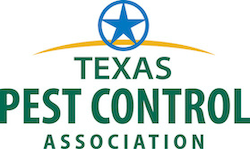Efficient Sod Webworm Treatment Services in the Greater Houston Area
GreenGate guarantees our 1x sod webworm application to be an excellent budget-friendly defense against our lawn’s most costly pest, Tropical Sod Webworm.
We use only the most sophisticated products & application processes to protect your yard, and we apply it just once in the late spring for guaranteed season-long protection. Our application also defends your lawn from armyworms and other turf damaging grubs.
With our “Great Communication Guarantee,” you will receive an email notification the day before your scheduled service and a text ahead when your licensed technician is en route to your home. You will also receive a post-service email with details about your service.
Sod webworms are the infant caterpillars of a type of Crambus moth. Usually, the larvae are laid in the thatch layer of grass in late summer, stay dormant over winter, then morph into the worm state in late springtime. Throughout the summer, they will mature into moths and lay more eggs, which can continue to morph and grow, causing multiple generations in one season.
The sod webworms will eat individual grass blades overnight at the soil surface, causing minor damage at a time, which can build into large patches of what looks like scalped grass. This can become permanent damage depending on the rate of infestation spread and summer heat and drought.
As hatchlings, sod webworms eat soft leaf tissue while the veins of the leaf remain, leaving a skeletal pattern behind. As sod webworms mature, bite marks form on the blades as the worms start to consume more of the grass. The worms take the blades into their silken tubes to eat them. Eventually, entire blades start to disappear as they are bitten off at the ground. This causes brown patches to form and widen out in a rapid timeframe.The brown patches may be small at first, but eventually they will grow and merge together, forming even larger patches. High heat and drought can mask this damage as the discoloration can appear very similar. Pet owners will often mistake these patches for urine damage as well.
Identifying factors of active sod webworms in your lawn, as opposed to other damage, can be that the grass is clipped off at the crown, and not just dead, as well as the lingering presence of adult moths in your surrounding landscape, and tiny neon-green waste piles left behind by the growing worms.
After our sod webworm application, adult moths will remain until it is time to migrate off, and more adult moths may morph and appear in that time. As the treatment is for the caterpillar webworms only, the moths (which are harmless) are not covered.
However, this will help prevent new larvae from hatching throughout the season. Yearly reapplication is recommended to prevent dormant generations from waking up each spring.






